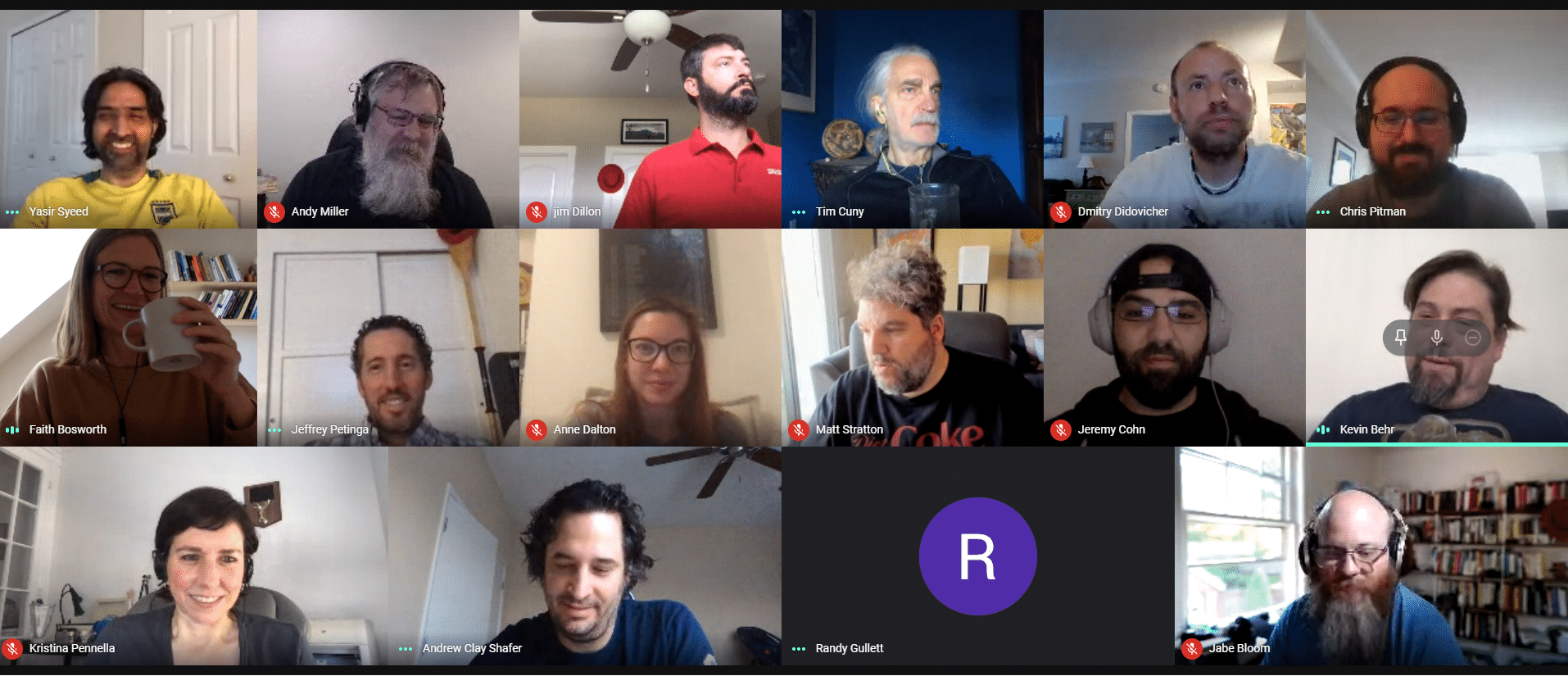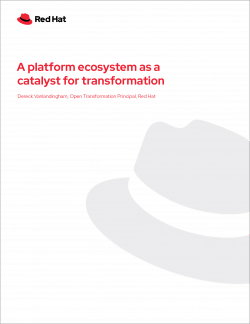‘A platform ecosystem as a catalyst for transformation’ by Red Hat
Shortly after we did our first online Book Sprint with RedHat in April 2020 to produce the OpenShift Security Guide, we came together again in July; this time to align around the art of platforming in ‘A platform ecosystem as a catalyst for transformation’. Members of the Red Hat Global Transformation Office and other departments within the company spent two weeks bringing together their various perspectives on how to drive organizational transformation beyond just delivering new technologies.
The Red Hat Global Transformation Office
The Red Hat Global Transformation Office was launched in 2019 to encourage organizations to take a more holistic approach to transformation. Software, systems, networking and storage all need to be aligned with the people working on these technologies and the associated processes, in order to increase the number of strategic opportunities an organization is capable of effectively responding to.
“I see a lot of enterprises getting fixated on technology as a magic solution when the real opportunity comes from changing behaviors. As exciting as open source cloud-native technology can be, I’m even more excited by applying the principles of openness to organizational change. The magic is in your people.” – Andrew Clay Shafer

Red Hat Book Sprint participants
The Art of Platforming
 The team that leads the office consists of Andrew Clay Shafer, Jabe Bloom, John Willis and Kevin Behr, all of whom participated as writers in the Book Sprint. Together with their colleagues they went through a process of developing a concept, outlining the content, writing in groups, and editing each other’s work. After the Book Sprint, the manuscript went through an internal review process. The text was shortened and published as an E-book for free download. It describes how organizations can use a platform ecosystem as a tool for transformation and foster a culture that leads to continuous improvement through ongoing learning.
The team that leads the office consists of Andrew Clay Shafer, Jabe Bloom, John Willis and Kevin Behr, all of whom participated as writers in the Book Sprint. Together with their colleagues they went through a process of developing a concept, outlining the content, writing in groups, and editing each other’s work. After the Book Sprint, the manuscript went through an internal review process. The text was shortened and published as an E-book for free download. It describes how organizations can use a platform ecosystem as a tool for transformation and foster a culture that leads to continuous improvement through ongoing learning.
The ecosystem consists of a digital platform, a platform team that creates and manages the platform as a product, and a platform community that helps the platform ecosystem thrive and fulfill a sustainable purpose. The digital platform is emerging as a focal point for transformation as it can reduce the cognitive load on technical staff who are overburdened with delivery pressures and mounting technical debt, two of the many impediments to transformation. Enterprises can increase the effectiveness of their platform community by applying lessons from the way communities are organized around successful open source projects. [Extract from the introduction]
The reader finds quick and specific takeaways on why transformation efforts fail, the goals for a digital platform, common mistakes limiting platform adoption, the roles, responsibilities and functions of the platform team and recommendations for implementation.
Congratulations, to the team of writers and everyone involved in this book. We are happy to see it out in the world!
